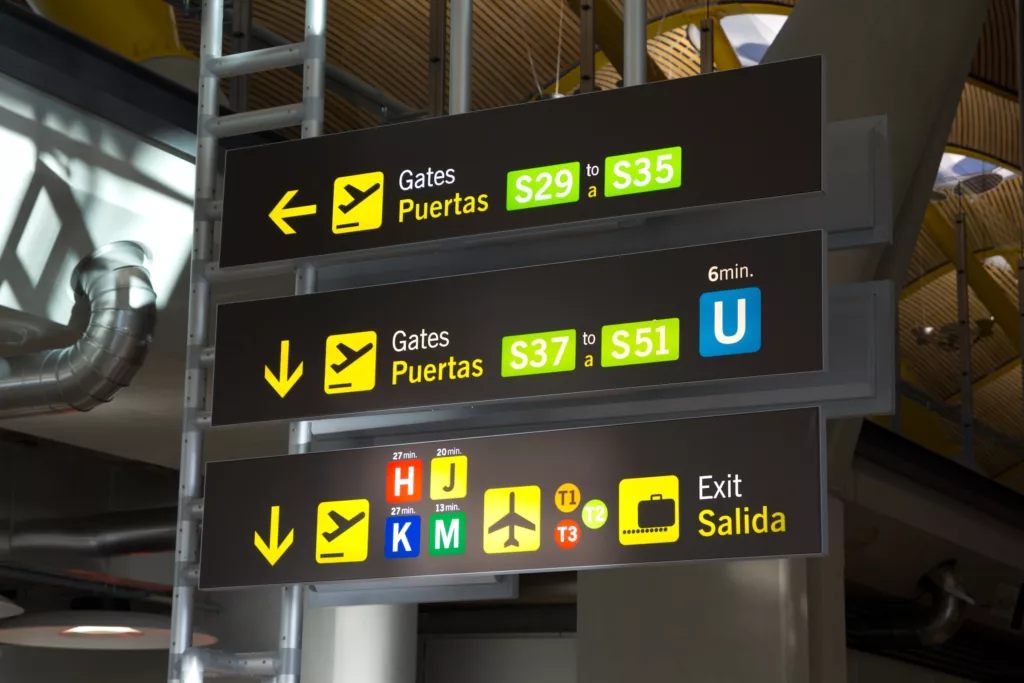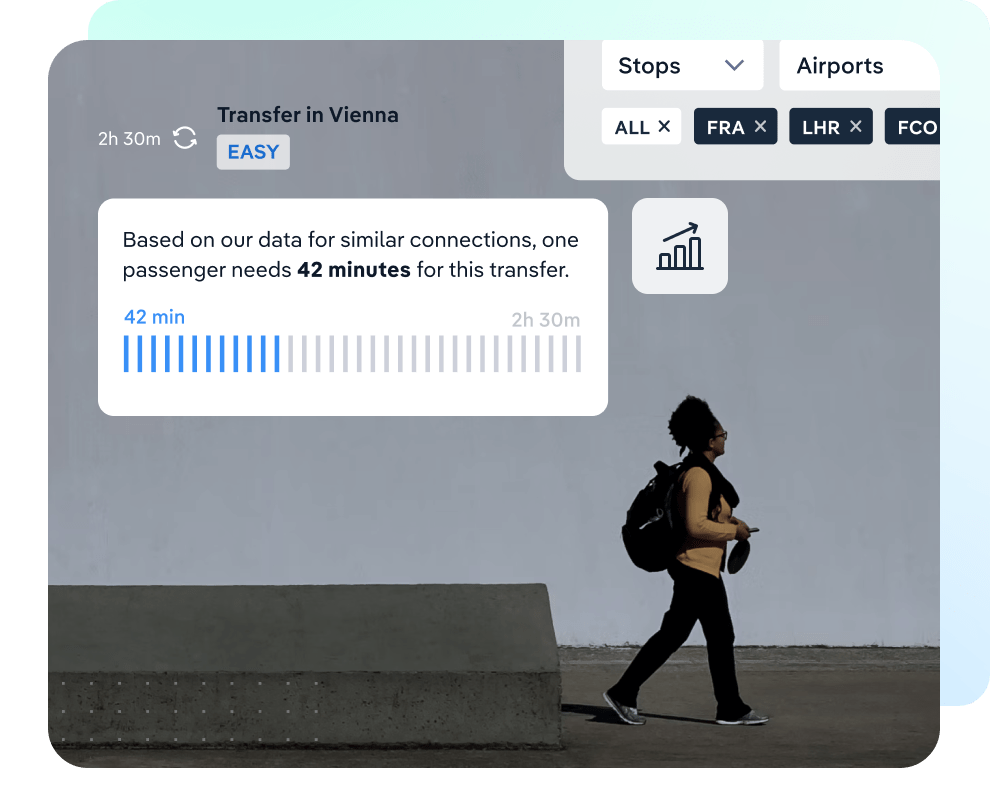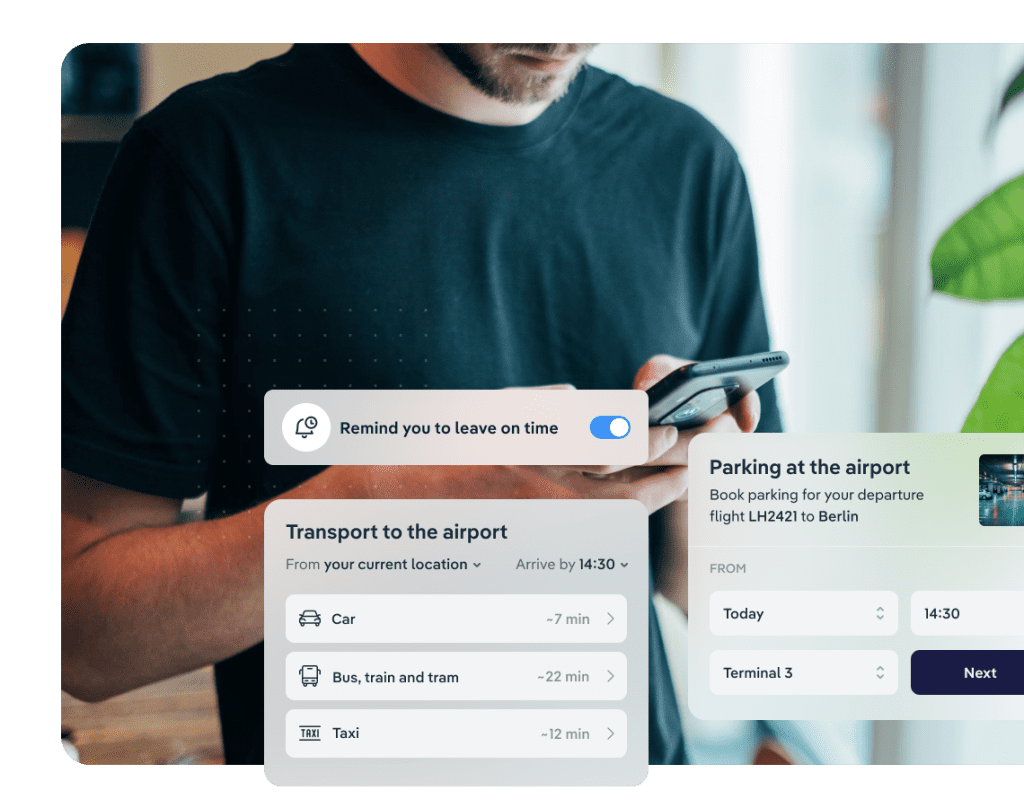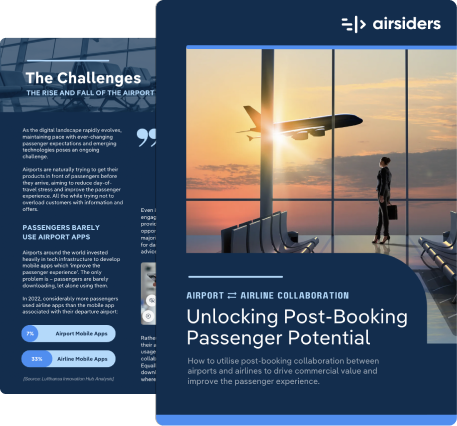Navigating The Digital Skies: The Case for Rethinking Airport Apps
In today's hyperconnected world, industries across the board are tapping into the transformative power of technology. The aviation industry is no exception, yet there remains a glaring anomaly.
Despite the proliferation of mobile apps, only a scant 7% of travelers use an airport app. What lies behind this disconnect, and what might the future of airport digital engagement look like?
The Enigma of the 7%
To understand this startling figure, we must first delve deep into the factors responsible for the minimal adoption of airport apps:
- The Engagement Timing Dilemma: By and large, passengers initiate their interaction with the airport at a point where the journey is about to commence. This late engagement diminishes the window for digital influence. Before this point, interactions largely revolve around airlines and travel platforms, leaving airports out of the equation.
- The Local Traveler Bias: Local and frequent fliers are the primary beneficiaries of these apps. For them, downloading and engaging with the app is a valuable proposition. In contrast, a vast majority of travelers resort to ad hoc internet searches or navigate the airport website, opting against the perceived inconvenience of an additional app download.
- The Personalization Gap: While airport apps present structured data, they often fall short in delivering a personalized user journey. The absence of bespoke itineraries, offers, or information tailored to an individual traveler's needs severely impacts the user experience and overall app retention.
It's intriguing to consider that in an age marked by a global surge in app adoption, airports have channeled significant capital into app development. Still, without robust promotional channels and tangible user value, the investment yield remains subdued.

Repercussions for the Airport Ecosystem
The implications of low app adoption are multifaceted and resonate deeply within the airport ecosystem:
- Opportunity Cost: The failure to engage passengers prior to their airport arrival signifies lost revenue opportunities, especially for lucrative services like parking, lounges, and fast-track security.
- Compromised Service Delivery: Once the traveler steps into the airport, the chance to offer real-time updates, guidance, or a hyper-personalized experience is greatly reduced, detracting from the overall service quality and passenger satisfaction.
Envisioning a New Era of Digital Engagement
If traditional mobile apps aren't the panacea to the airport's digital woes, what could be the way forward?
1. Expanding Reach Through Strategic Alliances:
To tap into the elusive 93% who remain disengaged, collaborations with airlines, retail providers, and travel platforms are paramount. These entities can actively promote the airport’s digital offerings, channelling their expansive user base towards increased airport engagement.
2. Prioritizing User Accessibility:
The era of app saturation has instilled a sense of app fatigue among users. To circumvent this, a digital platform accessible via the web, sans the need for downloads, can prove invaluable.
3. Pioneering Personalization:
The future of digital engagement hinges on personalization. Platforms must be designed to offer curated experiences, taking into account individual travel details, personal preferences, and specific travel circumstances.
4. Savvy Monetization Strategies:
Once users are onboarded and engaged, monetization avenues multiply. Dynamic, contextually relevant promotions, both from the airport and affiliated third parties, can be introduced to enhance revenue streams. The key lies in offering timely and tailored promotions at pivotal points in the traveler’s journey, ensuring relevance and maximizing engagement.

AirportCompass' Revolutionary Approach with the Airport Webapp
This vision isn't confined to the realms of ideation. AirportCompass' groundbreaking Airport Webapp offers a tangible glimpse into the future of airport digital engagement.
Here’s how it's revolutionizing the landscape:
- A User-Centric Interface: Passengers can seamlessly input their itineraries and personalize their travel details.
- Immersive Visual Experience: A visually arresting interactive map offers a step-by-step preview of the journey, making trip planning intuitive and enjoyable.
- Dynamically Curated Promotions: With sophisticated algorithms at play, users are presented with promotions that align with their preferences and journey stages, optimizing conversion rates.
- Real-time Wallet Pass Feature: This innovation ensures users stay updated in real time, cementing the platform’s utility quotient.
The plug-and-play nature of the WebApp allows seamless integration into diverse channels - from airport websites to interactive monitors. The cherry on the cake? As a web-based solution, it's primed for easy integration with travel platforms and websites, amplifying its reach.
The Flight Path Ahead
In the grand tapestry of the aviation industry, digital transformation remains an ongoing journey. The onus lies on airports to keep pace, continuously innovate, and offer enhanced user experiences. The pivot from traditional app models to more expansive, web-based platforms signifies a step in the right direction.
As airports globally seek to redefine passenger experiences, the collaborative synergy between airports and entities like AirportCompass presents a promising horizon. With tailored solutions like the Airport Webapp leading the charge, the future of airport digital engagement seems not only bright but boundless.
For those at the crossroads, pondering their next digital strategy move, the answer might just lie in broadening horizons and embracing this new era of engagement.
If this paradigm shift resonates with your vision, it's time to join the journey. Engage with us to explore the possibilities.
Back to all articles
